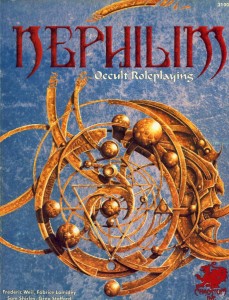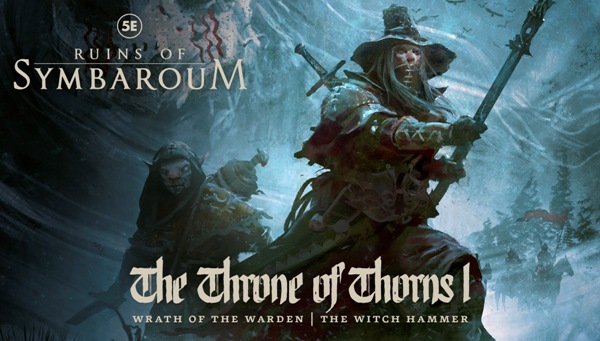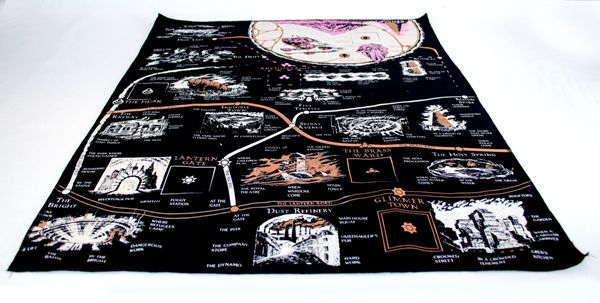Nephilim Occult Roleplaying
Nephilim is a modern divine fantasy setting (with a dark flair, powered by Basic Roleplaying) written by Frederic Weil, Fabrice Lamidey, Sam Shirley, and Greg Stafford and published by Chaosium, Inc.
By Aaron T. Huss

Learn more about product here
Purchase product here
Find other Basic Roleplaying products here
History as you know it is a lie. Created from the raw elemental forces that cross the world, Nephilim are ancient, god-like beings in the sense of a spirit portrayed as a deity in ancient times. They date back through the ages, surviving off the magical forces of the five elements. As time went on and humans came about, the Nephilim became viewed in varying ways, some good and some bad, some so bad it borders on outright slavery of a deific-like race. Nephilim spend centuries dying and reincarnating, incarnating themselves into the bodies of humans. Their pursuit is simple: achieve ascension into the “afterlife” called Agartha, a place that provides immaculate power. But the journey is not an easy one as the Nephilim must now learn how to ascend in a world filled with humans that work against them. This is the player character’s struggle: achieve ascension while surviving in a world that wishes you dead.
Nephilim is deemed as Occult Roleplaying. This does not mean that Chaosium (as a translation from the French version) took modern day occult and translated it into a roleplaying game. Rather, it took the concepts of occultism and created its own occult canon, wrapping it into the underlying themes and setting found within Nephilim. The setting is one somewhat opposite of traditional role-playing games. You are not playing a hero or heroic figure, attempting to thwart the big bad’s plans and possibly save the world. Nor are you a key investigator attempting to crack the mystery of what is haunting the local asylum. Nephilim are seen as good in their own eyes and the eyes of their supporters, but in general, the populace would rather they were gone or used as a tool for human enlightenment. Thus Nephilim is a game about struggling in a world that once called you a god and now considers you a demon.
CONTENT
Introduction provides the introduction into role-playing (as seen many times before) and more importantly an introduction to the history of the Nephilim. While this is strictly an overview and doesn’t give a true sense of what the setting is like, it definitely peaks the interest and urges you to read on.
Past Lives gets into the process of creating new characters. This includes a look at a character’s life before and up to the end of what is being created now (during character creation). The Nephilim are ancient beings and one must understand their character’s past lives to understand their character’s current capabilities (skills are dependent upon those past lives). In addition, as Nephilim are created directly from the elements, they will one day metamorphose into an elemental creature, such as a djinn or undine. As the Nephilim must incarnate into human bodies, referred to as Simulacra, this is covered as well.
Incarnation is all about the in-game mechanics covering the standard game system (Basic Roleplaying), combat, injury, reincarnation, and reaching Agartha (if that’s truly possible in one’s campaign).
Initiation is all about the magic and occult themes of Nephilim including a look at the magic fields, occult science (from books), sorcery, summoning, and alchemy.
The Exoteric is really the section dedicated to the Game Master. This section talks in-depth about the occult world, some of the known (or unknown) secrets, the different secret societies, sacred places, and a list of adversaries. This is incredibly interesting reading for players, but try not to spoil too much of your campaigns.
OVERALL
I like a lot of different game themes, and Nephilim carries aspects of many of those (such as modern fantasy, modern horror, and divine fantasy). Its the unique blend of themes producing this spectacular setting filled with potential. So why does this really matter? Because Nephilim is like nothing else I have seen before in terms of setting design. The mechanics are familiar, giving one a sense of ease when starting an entirely new game. It’s really the type of game setting that you have to read to understand and play to truly experience, as you probably won’t find it anywhere else.
It should be noted that the Nephilim setting truly grows and expands all throughout the book by giving bits and pieces of information throughout each section (as they relate to the subject matter at-hand), adding to the setting’s source material. This does mean that very little can be skimmed over as you may miss something intriguing.
RATINGS
Publication Quality: 7 out of 10
Keeping in mind that Nephilim was published in 1994, it is a good-looking book with a clean layout and good formatting. There are a lot of little editing errors, but nothing that was so bad it detracted from the quality of the content. Some of the art is really cool while some illustrations really made me question how they link to the setting or system (they just didn’t seem to fit the theme). Other than that, the book is not only easy to read but is an extremely intriguing read. Nephilim is possibly one of the most interesting settings I have ever read as its underlying theme is so different in terms of role-playing, divinity, fantasy, and history.
Mechanics: 10 out of 10
Nephilim is powered by Basic Roleplaying. However, more importantly, it is powered by a system that meshes well in many ways with the setting. This is not because of the Basic Roleplaying standard mechanics, but rather because of the new mechanics for magic in regards to the elemental magic fields and how they react to different days of the week and months of the year. In addition, there are great mechanics to handle the concept of being a god-like being and having to incarnate into a human body. The basics of the Basic Roleplaying mechanics fit in very well with regards to Skills, Attributes, and Combat. While its conceivable that other systems could easily be used, I really like the incorporation of Basic Roleplaying into the Nephilim setting.
Desire to Play: 10 out of 10
Nephilim fits a very specific niche. It is not traditional modern fantasy, it is not traditional horror, and it most certainly takes divine fantasy into new directions. What it is is a mash-up of different themes into a single harmonious entity creating its own unique experience. You are playing god-like characters like divine fantasy but filled with despair and survival such as what you would find in dark fantasy and horror. It’s like a dark version of divine fantasy. With that in mind, everything about Nephilim supports this theme from the fluff to the mechanics and every nook and cranny in-between. You have to want to play a game like this to get the best experience. But upon deciding that this is something that interests you, I don’t think your game-play experience will be disappointing.
Overall: 9 out of 10
Divine fantasy has always intrigued me. However, playing a god-like being with amazing powers that can control swathes of humans with a simple flick of their wrist doesn’t sound very challenging. Take that same scene and turn the humans into “hunters” of the god-like beings with knowledge that has been lost to many of those god-like beings, now you’re getting into some exciting and challenging campaigns. How do you survive as a demi-god when no one wants to worship you and most people want to see you dead? Nephilim is definitely different and is not for everyone. But those who find any type of intrigue in its content will find some exciting themes within.


